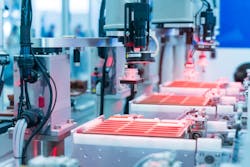Visionary Uses for Machine and Embedded Systems
Understanding the different definitions and uses of vision and manufacturing systems can be a challenging ordeal, sometimes leading to complications when customers ask for the systems to be imbedded in a machine design.
Machine vision is generally composed of a standalone camera, standard communication interface, PC running image-processing software and consistent lighting for the camera. Embedded vision, on the other hand, doesn’t require a standalone PC and includes smaller camera elements, providing a different and sometimes better option for some machines.
Finding which system will work best for a given machine generally depends on the desired machine application.
To learn more about the differences between machine and embedded vision systems, read the full story from partner publication Control Design here.

